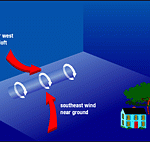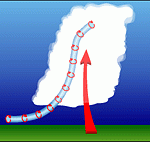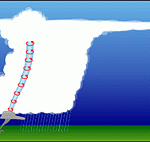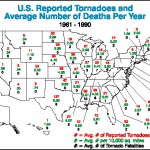NOAA’s national severe storms laboratory calls tornadoes “nature’s most violent storm.” These violent storms are defined as rotating columns of air extending from a thunderstorm to the ground, and occur more frequently in the United States east of the Rocky Mountains than in any other location worldwide. From what causes tornadoes to protection measures, the NSSL has covered all the bases. Tornadoes are developed from thunderstorms and emerge in advance of east-ward moving cold fronts. Tornadoes form when a change in wind direction creates a horizontal spinning effect in the lower atmosphere, which is then tilted upward by rising air within the thunderstorm creating a column of rotating air.
Tornadoes are often succeeded by another tornado, and therefore you rarely see a single tornado in the accompanying storm. They have a wide range of occurrence including damaging outbreaks in the Carolinas, Pennsylvania/Ohio, and across the plains. Tornadoes often occur in the afternoon; they can occur throughout the year, and have peak seasons depending on the location. Some other dangers that often accompany tornadoes are lightning, flash floods, hail, and damaging straight-line winds. Most recently, the tornadoes of March 2-3 occurring across the southeast U.S. and into the Ohio Valley region, were responsible for 41 deaths and was the second deadliest for early March in the U.S.’s history. My own house experienced mild damage as a few windows were blown out due to the strong winds. Some early warning signs of tornadoes include a dark, greenish sky, wall cloud, large hail, and a loud roar similar to a freight train. Knowing these foretelling clues and staying alert to weather and news reports can help minimize lives lost due to these violent storms. The above image displays the yearly average number of tornadoes reported and the average number of deaths resulting from tornadoes by state.




